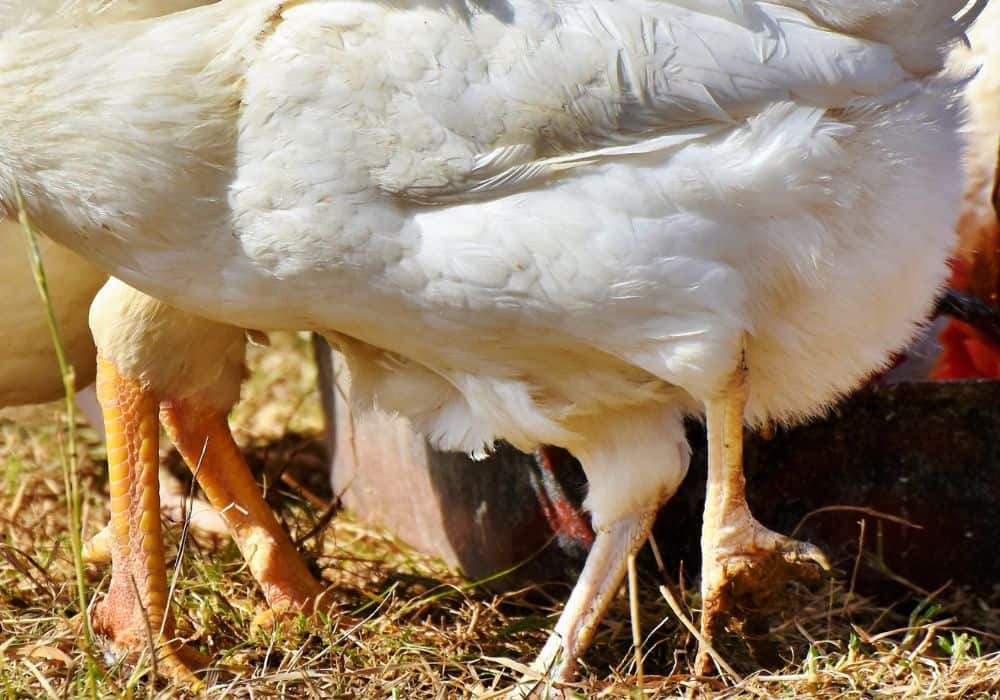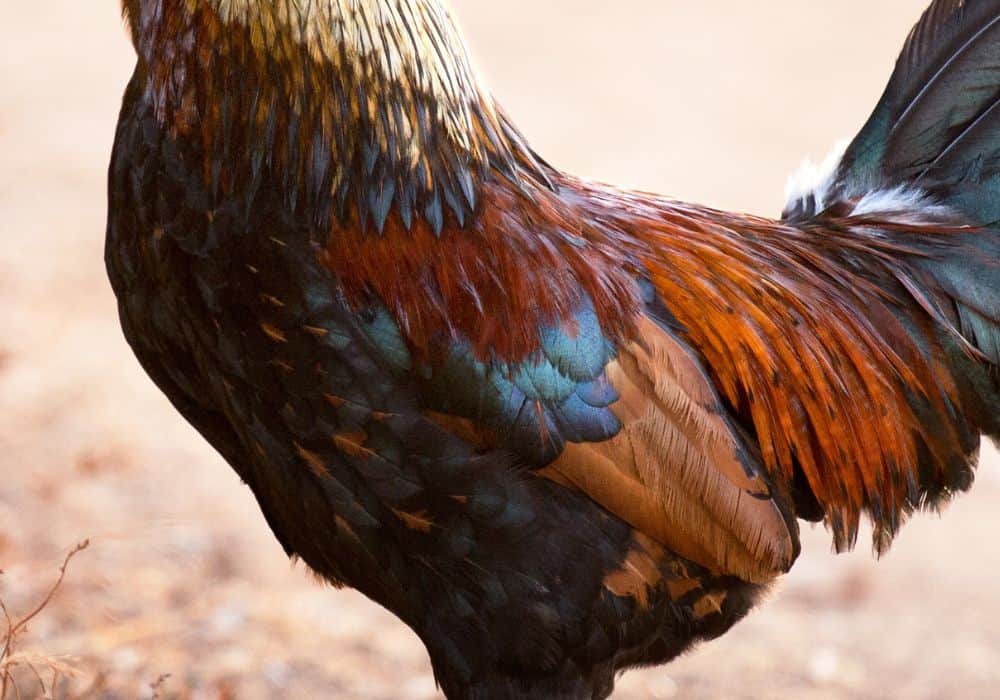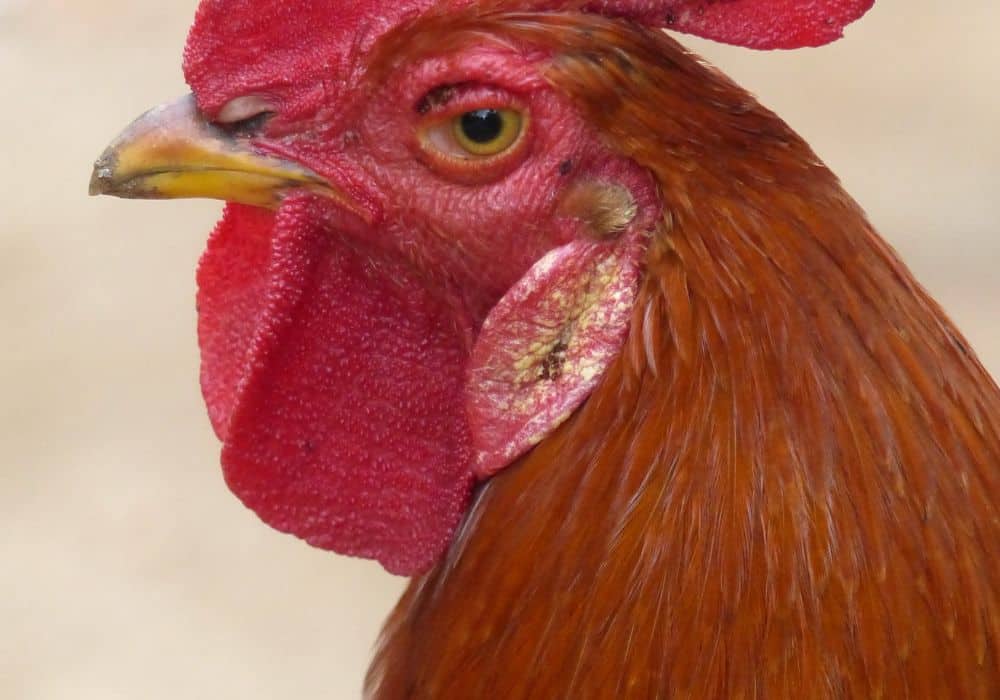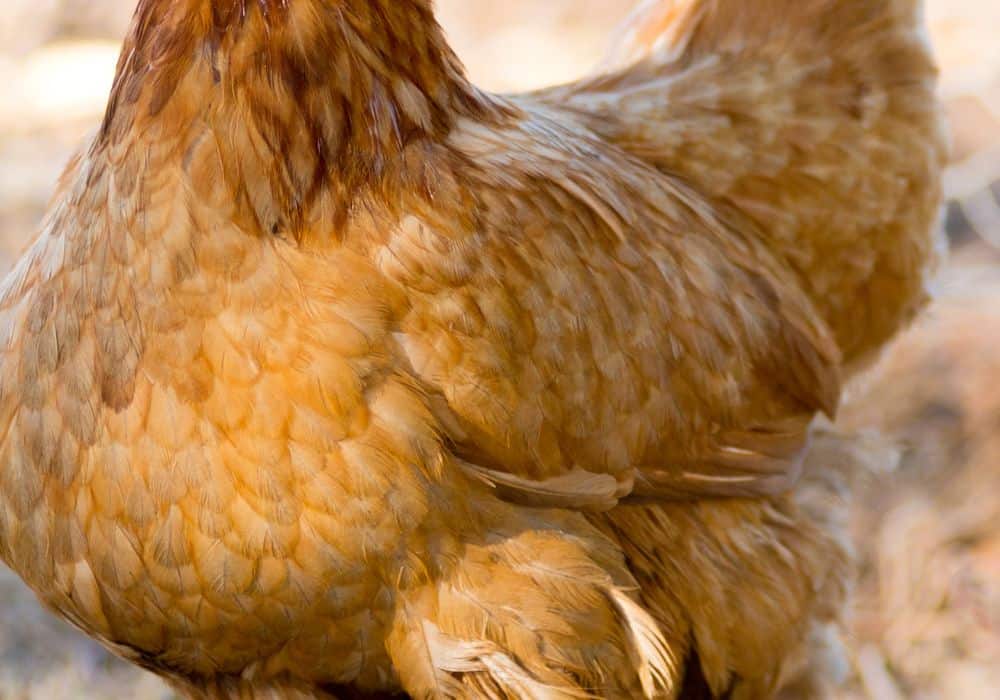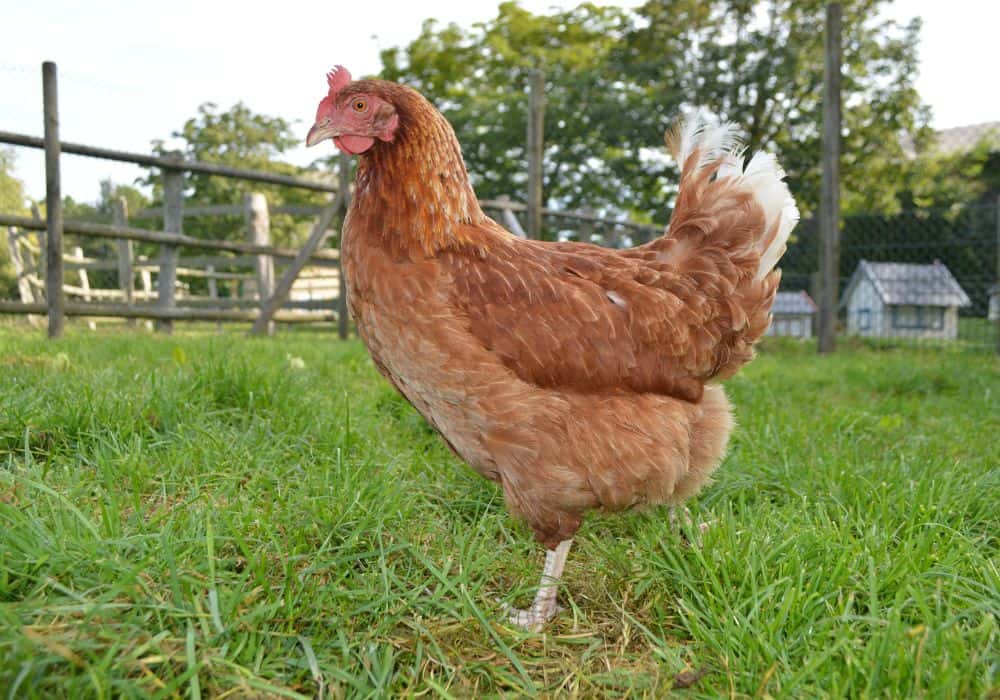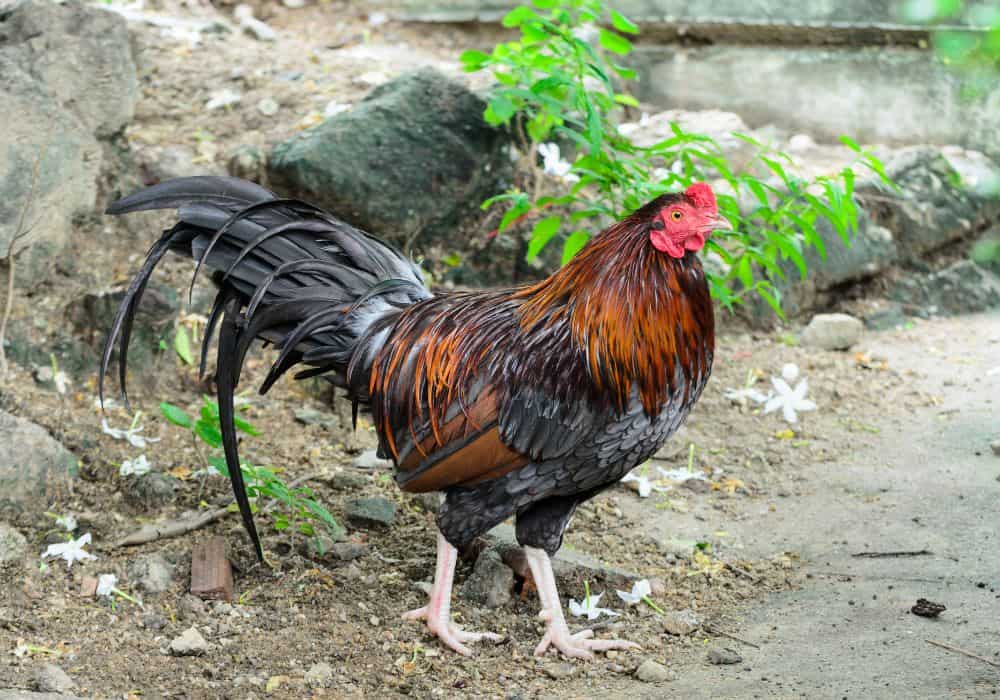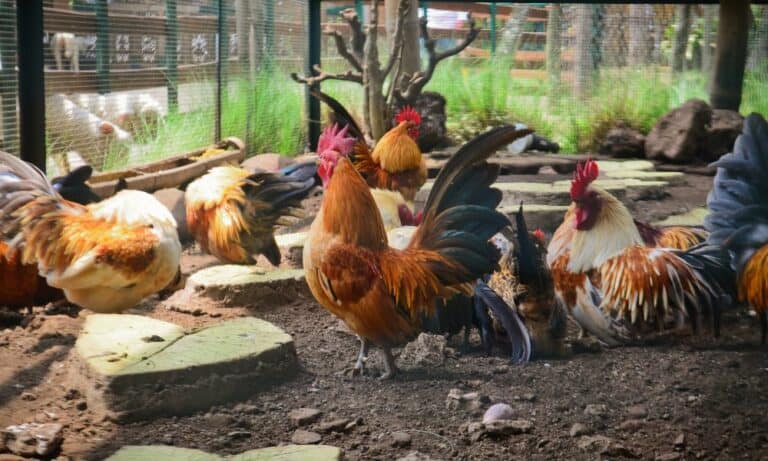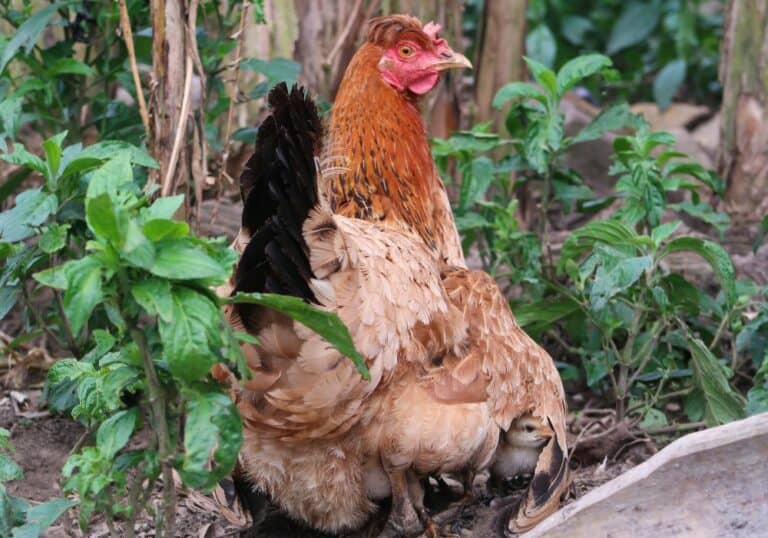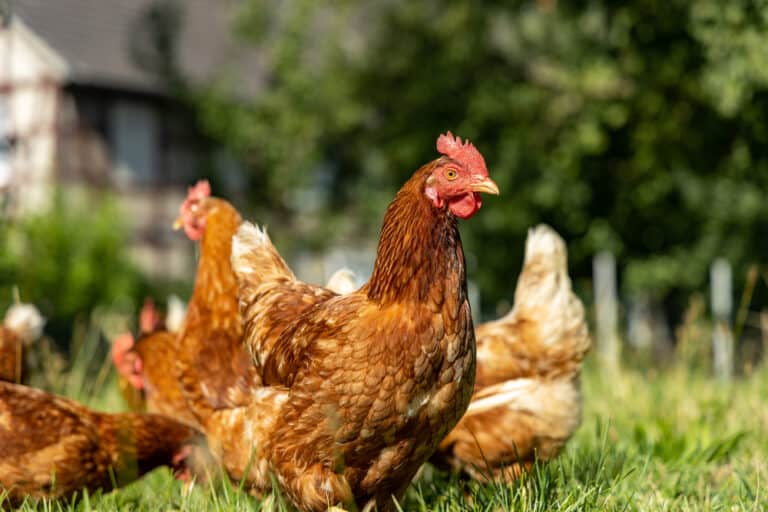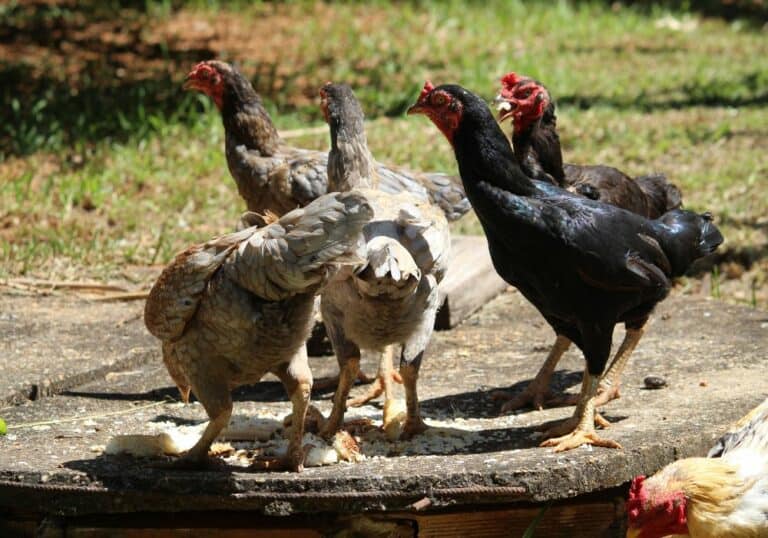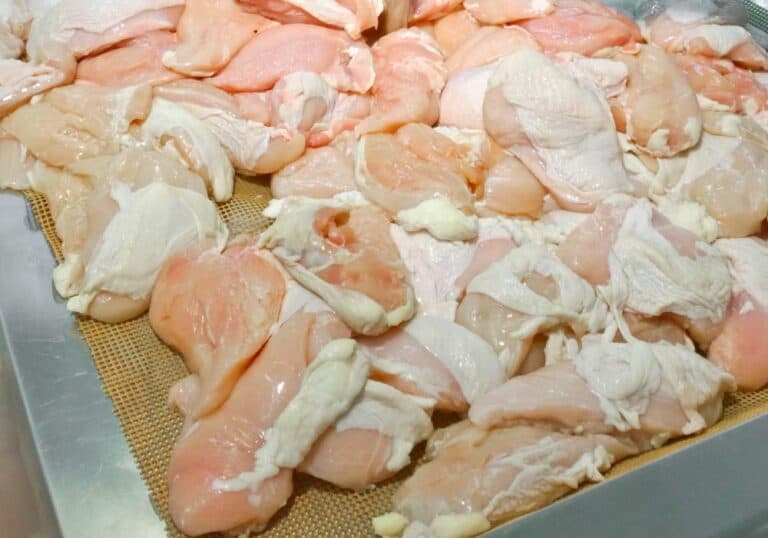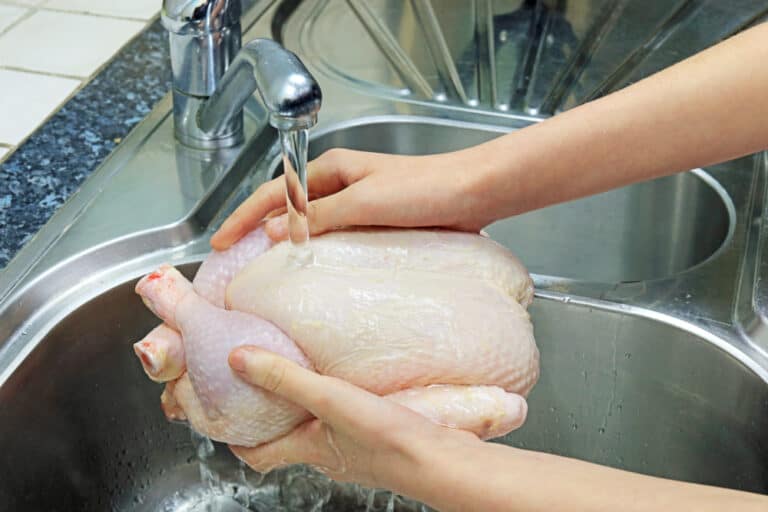If you own chickens, it is important to understand their anatomy. Why? Because when you know how your chickens are ”built” you will be in a better position to know when something is not right with your chickens. When you know the chicken anatomy, you can identify symptoms early and address them before they get worse.
In this article, we cover the key aspects of a chicken’s anatomy from its comb to its toes. So continue reading to understand the anatomy of your chickens better.
Parts of the Chicken We Can See
Let’s start by looking at the parts of the chicken we can see. Below, you can find a list of a chicken’s body parts in alphabetical order, with a brief explanation of each.
Beak
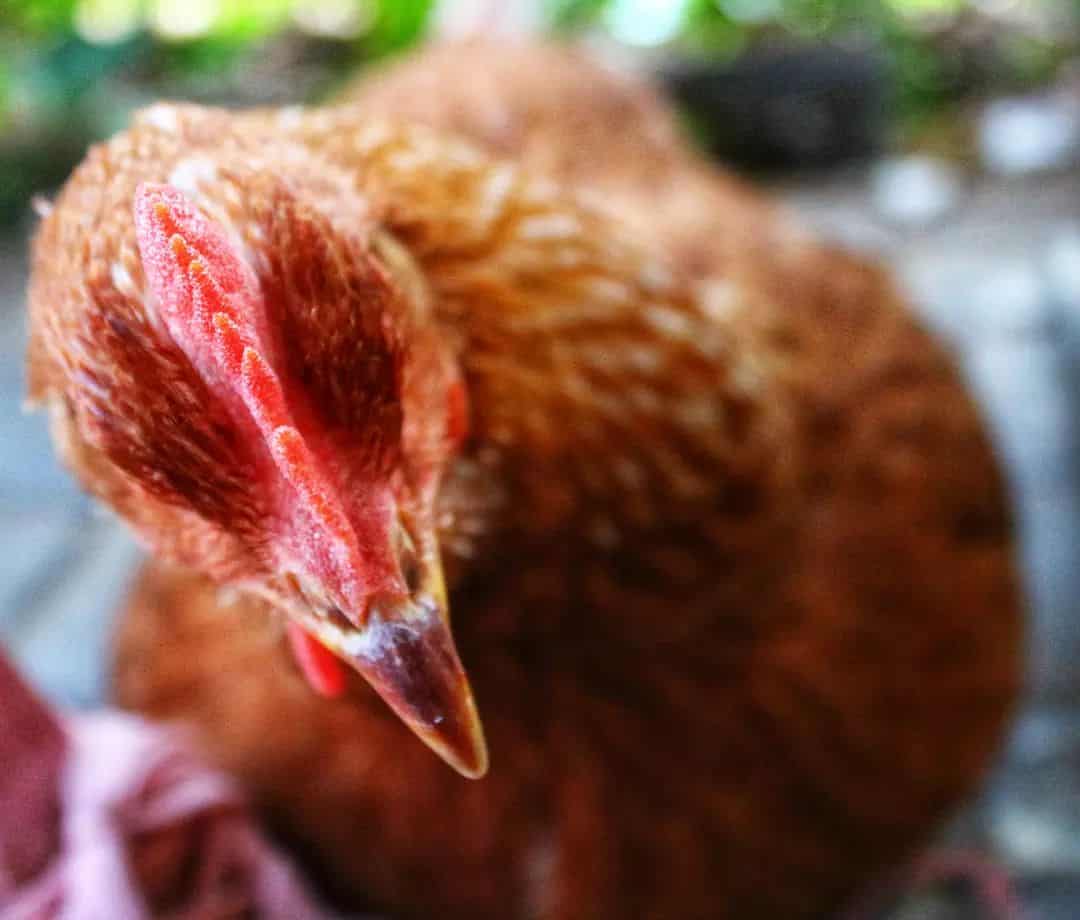
chickennoodleandco
A chicken’s beak should be straight to support its ability to find and eat food. However, sometimes it can be deformed where the top and bottom parts cross over to form a scissor-beak. How much this will affect the chicken will depend on the severity of the crossover. Some chickens will still manage to eat normally despite the crossover.
Comb
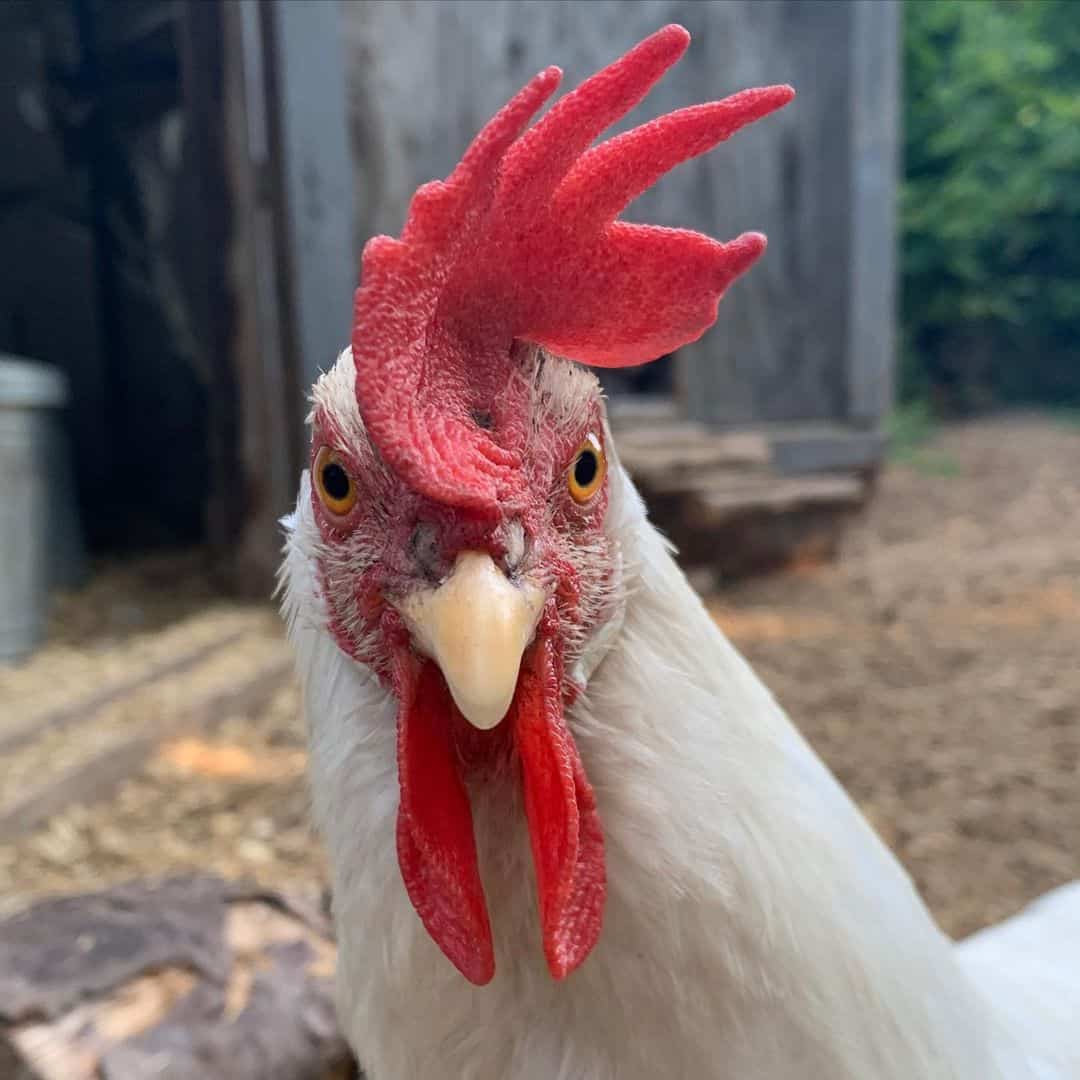
A chicken’s comb is the featherless growth on top of its head and both females and males have them. Combs come in different shapes and sizes depending on the breed. Together with the wattles, a comb helps the chicken stay cool and to preserve heat.
If the chicken feels too hot, it can lose excess heat through the comb and wattles. In colder temperatures, the chicken can shut down its blood supply to the comb to preserve heat. In a healthy chicken, the comb is plump and feels elastic.
Head
You can often tell if there is something wrong with your chicken by looking at the parts of its head. For example, there should be no discharge from its nostrils and its eyes should be clear. If the ear lobes around its pinhole size ears show consistent signs of pecking, it could be a sign that the chicken is being bullied.
Legs
A chicken’s leg is made of several parts. The upper part is called the hock and below that is the shank. This is the long upright part of a chicken’s leg, between the foot and the hock, which is a joint connecting the shank and thigh. If a chicken has spurs, it will grow in this area. The lower part of the leg is the drumstick.
While both sexes of chickens can grow spurs, it is not common to find spurs on hens. The spurs are located on the back of the chicken’s shank and made of keratin like our nails and hair. Roosters use their spurs for protection and fighting and in a fight between two roosters, the spurs can inflict serious damage on the opponent.
Main Body
The part of the chicken between the legs and the head can be considered the main body of a chicken. The main part includes the breast, back, shoulder blades, feathers, and wings.
Points
The points are small pieces of skin positioned on the top of the chicken’s comb. These points, which can be rounded on some breeds, are sensitive to cold and can get frostbite. They can also easily get damaged if your chickens are fighting to establish their pecking order.
Wattles
Wattles are the elongated, thin lobes of fleshy skin that hang down below a chicken’s head. Both sexes have wattles and they use them together with their combs to regulate their temperature. Similarly to the combs, wattles can get frostbite during cold weather.
Wings
In most bird species, the wings are used to fly and their wings and chest muscles are strong and bodies streamlined. Chickens are different. They were bread from birds that could only fly into a tree when they needed to escape predators. In addition, the breeders’ focus was on egg or meat production, rather than flight ability.
The wings of a chicken are short and rounded, suited for quick bursts of flight. Its wings attach to its largest bone, the sternum. Because of breeding, the muscles connecting the sternum and wings have grown weaker, further reducing chickens’ ability to fly.
Types of Feathers
When you look at your chickens you will notice that they have different types of feathers in various parts of their body. The feathers all have their unique purpose.
Ear Tufts
These are short plumes that cover the chicken’s auditory canal inside the chicken’s ears. The plumes in the tufting work may collect and concentrate sound waves, which gives chickens their ability to hear exceptionally well.
Flight Feathers
These are the feathers that give the chicken a lift when it attempts to fly. They allow the chicken to rise into the air for a short time but will not support an extended flight. Many people trim the flight feathers of their chickens to stop them from escaping their coop.
Fluff
Chickens have fluff feathers as part of their plumage under their exterior feathers. The purpose of the fluff feathers is to keep them warm. Sometimes chicken can fluff out their feathers to make them look bigger. They will do this to appear more intimidating to other chickens or potential predators.
Hackles
Both hens and roosters have hackle feathers. The hens use their hackles when they feel threatened. Roosters can also use their hackles to intimidate predators but more often they will use them to intimidate competing roosters. In roosters, the hackles are longer than in hens and flow down toward the bird’s body.
Saddle
For hens, there is not much difference between the feathering on the saddle and the rest of her body. However, on roosters, the saddle feathers should be long and flowing on both sides of their tail feathers. They will use their saddle feathers to attract hens during mating season.
Sickle Feathers
Hens do not have sickle feathers, only roosters do. These are found in the tail and are long and arching feathers. A rooster’s sickle feathers have no practical purpose. Similarly to saddle feathers, they can be used to attract hens when the rooster is looking for a mate.
Tail Feathers
In a female chicken, the tail feathers are short and purely practical. The tail feathers help the hen to balance and can help her take off when it tries to fly. In males, the tail feathers are part of its sexual characteristics and they are much more prominent than in the hens.
The Anatomy of Chicken Bones
Unlike most other vertebrates that have a skeleton consisting of one type of bone made with collagen and calcium, chickens have two kinds of bones, each serving a different purpose.
Medullary Bones
A chicken’s medullary bones store calcium and include the ribs, femur, tibia, and scapula. The calcium stored in these bones maintains bone health and supports the growth of strong egg shells.
If the calcium level in the bones falls, the chicken will lay eggs with soft shells and ultimately stop laying to protect her bones. This is called cage layer fatigue and it can be seen as a type of osteoporosis.
Pneumatic Bones
The skull, pelvis, keel, humerus, clavicle, and lower back bones are all pneumatic bones. They are hollow and contain air and bone marrow. Pneumatic bones connect to the chicken’s respiratory system through the air sacs in the bones.
The Reproductive System of a Chicken
A chicken’s reproductive system is made of several parts, which all play a part in egg production. When a rooster mates with a hen, its sperm enters through a cloaca and travels to the oviduct. From there, it continues through the shell gland to the isthmus, magnum, and infundibulum where they wait for the eggs that are forming.
The yolk develops in the ovary, then travels into the infundibulum where it is fertilized with the waiting sperm. The fertilized egg passes out through the cloaca. Sometimes people may use the word vent for cloaca. However, the vent is an opening that leads to the cloaca.
The Digestive System of a Chicken
When chickens eat, the food travels whole through the esophagus to the crop where it is stored until ready for digestion. From there, their food passed through the proventriculus and to the gizzard where the food is ground down.
Once the food is soft enough, it will travel to the small intestine where enzymes from the pancreas reduce it further. The duodenum, ileum, and jejunum are all part of the small intestine and help to absorb nutrients from the food.
The chicken’s liver produces bile, which it stores in its gall bladder until it is needed to break down fat in the food. Any undigested food together with water is absorbed by the large intestine and the caeca ferment the food that has not yet been digested. Finally, feces and urine are passed out through the cloaca.
Respiratory System of a Chicken
A chicken’s respiratory system works differently from mammals. While a mammal’s diaphragm inflates and deflates the lungs, a chicken has nine air sacs, which are in its neck. As the air sacs inflate to move air into the lungs and around the body. The nares on its beak allow the air to move in and out of its body through a trachea.
Conclusion
Understanding the anatomy of a chicken is important for all chicken keepers as it can help you to recognize potential issues in your chickens before it is too late. If you would like to ask us anything about chicken anatomy, you can write your questions in the comments box.


